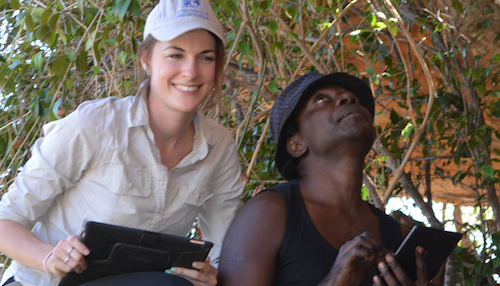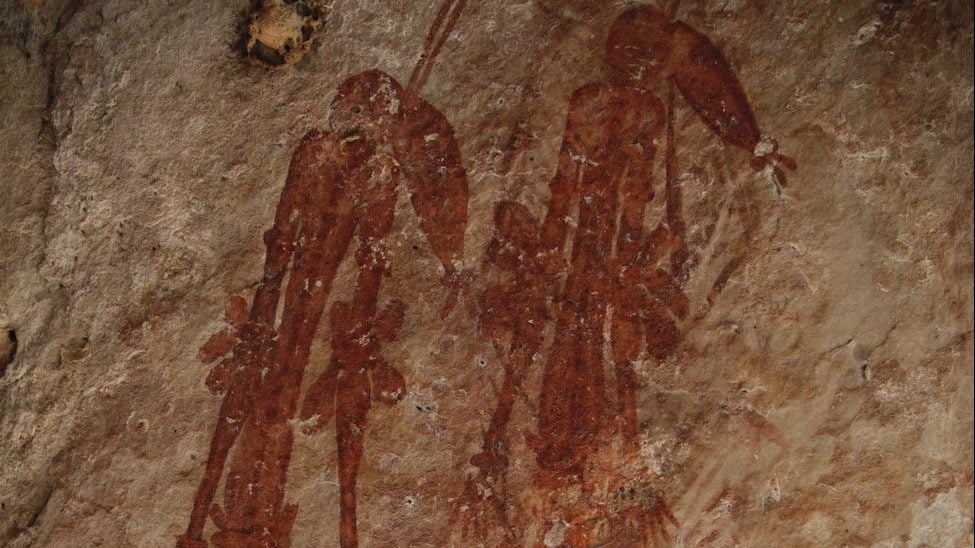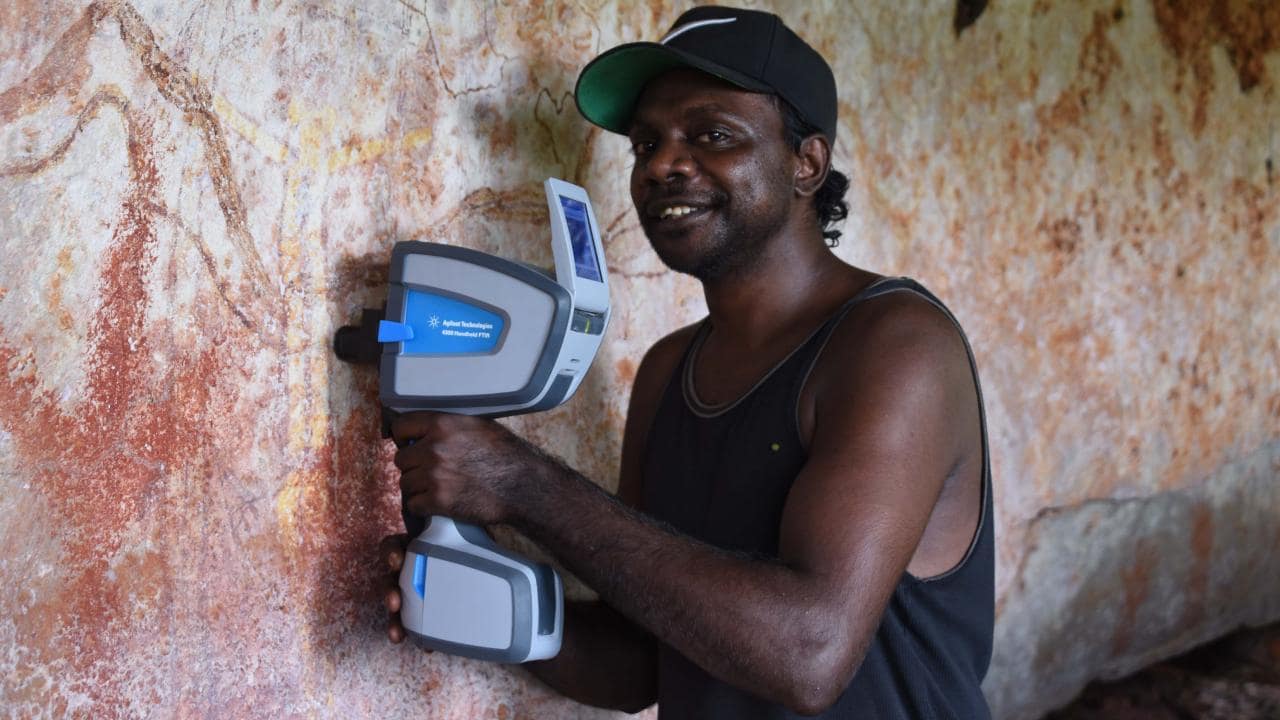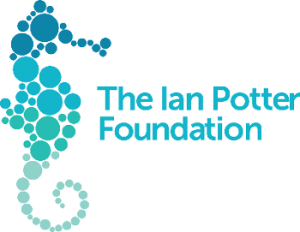Dr Helen Green is a Research Fellow in the School of Earth Sciences at The University of Melbourne holding Rock Art Australia’s 5-year Fellowship in Rock Art Dating from The Ian Potter Foundation. The Award was granted to RAA in October 2017.
Helen was employed as a Post Doctorate Researcher on the Australian Research Council (ARC) Linkage Project with Rock Art Australia, focussed on dating the Aboriginal rock art of the Kimberley region (2014-2018) and is a Chief Investigator on the Rock Art Dating Project-2 (2018-2022). Helen is also an Associate Investigator on the ARC Centre of Excellence for Australian Biodiversity and Heritage (CABAH).
Helen’s research over the last five years has focused on analysing mineral accretions using a range of geochemical techniques to characterise and understand the formation processes occurring in relation to rock art pigments in north west Australia’s Kimberley region. These techniques include uranium-thorium dating, radiocarbon dating, stable isotope analysis along with analytical techniques such as X-ray diffraction analysis, scanning electron microscopy, electron microprobe analysis and others. Using this knowledge Helen is adapting both radiocarbon and uranium-series dating techniques to oxalate and phosphate bearing layered mineral accretions, with an aim of generating bracketing ages for different rock art styles comprising the established rock art sequence in the Kimberley region.








